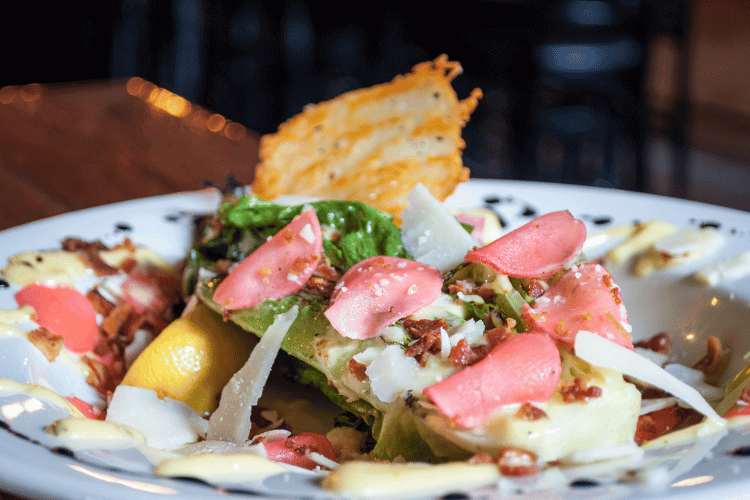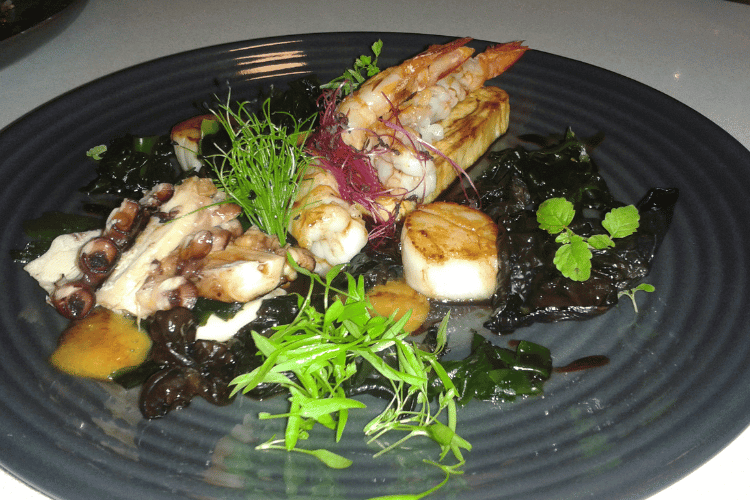Whether you’re a beginner chef, you’re looking for new recipes to try out, or have dined out in the past couple of years, you’ve probably heard of deconstructed food. The latest dining trend is unavoidable, but what does deconstructed mean in cooking?
Deconstructing food is basically simplifying a dish to its main ingredients, then presenting the dish in an intriguing manner. In the culinary arts, deconstructed food focuses less on flavor. Instead, the plate is the chef’s art canvas.
In this article, we’ll tell you everything about deconstructed food and all the reasons you should try the dining fad. Let’s dive in!

What Does Deconstructed Mean in Cooking?
Deconstructed means breaking something apart in order to analyze and interpret it. In culinary terms, deconstructed food involves separating the ingredients or basic components of a dish, then presenting them in an entirely new manner.
Any dish can be deconstructed. The main elements of the meal need to be cooked separately, presented uniquely, then reintroduced in the diner’s mouth, creating the flavors of the original dish.
Furthermore, deconstructed food introduces familiar dishes in an imaginative, artistic way. So, it can be considered art, not just cooking.
This allows chefs to be as creative as they can be when it comes to food presentation. While all chefs can make the same apple pie, deconstructing the dessert means every culinary artist will have their own spin on it.
Accordingly, each diner will also have their own experience when trying deconstructed food.
Though it’s best to have deconstructed food the way it’s served, you might also try the dish’s core elements, mix it up in different ways, or even reconstruct it back to its original form. The possibilities are endless.
That’s not all. The eyes eat first. Since deconstructed food is incredibly intriguing, you might find yourself loving a dish you previously disliked!
Origin of Deconstructed Food
Nowadays, deconstructed food is everywhere. Most restaurants offer some form of disassembled dish, to keep up with the latest culinary trend.
However, deconstructed food was a form of haute cuisine. Diners flocked to certain Michelin restaurants to try artisanal deconstructed dishes, before they became mainstream.
Ferran Adria, one of the top chefs in the world, is associated with the art of deconstruction, and molecular gastronomy. That’s why many chefs consider him to be the godfather of deconstruction.

In contrast, many cooks find the cooking method pretentious, while others follow the trend by creating low-effort dishes without real vision.
Simply put, deconstructed food is an art form. While this is currently a cooking fad, there are chefs who can elevate it into culinary masterpieces.
Why You Should Try Deconstructed Food
People are drawn to deconstructed food for all sorts of reasons. Chefs like expressing themselves through food, and diners want the lavish experience.
That said, there are numerous motivations for you to implement deconstructed food into your lifestyle, especially if you’re a foodie. These include the following:
Enhances Flavors
While deconstructed meals don’t include any flavor enhancers or any fancy preparation steps, many diners find disassembly to enhance the taste and sensory experience.
Chefs also take their time preparing disassembled food. The reason is that guests will get to try each element of the meal on its own, so there’s less room for error.
In addition, even if the food tastes identical to its traditional form, the visual appeal and overall dining event are unlike any other.
Offers an Artistic Experience
When dining at any restaurant, you might only remember the taste of the food or the service. However, deconstructed artisanal cuisine is a once-in-a-lifetime experience.
You’ll get to connect with the chefs, appreciating the art and effort that went into creating every part of the dish.
Moreover, disassembled food allows you to learn about the ingredients and how different flavors can combine to create something new.
Great for Picky Eaters
Deconstructed meals allow you to mix and match. So, if you’re a picky eater, you can adjust the meal’s texture, modify the portion size, and add your personal touch.
This can be especially great for children or people who have difficulty with certain food textures.
Additionally, one deconstructed dish has various tastes depending on how you assemble it. So, if you dislike an ingredient in a meal, you can still order it and enjoy a tasty dinner!
Reasons to Make Deconstructed Food at Home

Deconstructed food isn’t just for chefs to express themselves and create culinary art. You can also try making deconstructed food at home.
Here are all the ways deconstructed food might make dinner more interesting:
It requires minimal effort, so you’ll still have tasty meals on lazy days.
You can spin classic family recipes into disassembled food, creating new dinner ideas.
There’s no need to make different meals for picky family members.
The portion size is adjustable, so no food goes to waste.
Frequently Asked Questions
Is deconstructed food easier to make?
Deconstructed food requires less time and effort than traditional dishes. After all, you don’t need to mix the ingredients or assemble the dish.
Still, what deconstructed food lacks in effort, is made up for by creativity. To make disassembled dishes, you need to have a purpose for breaking down the ingredients and an idea of how to present the food.
Can you deconstruct any food?
You can deconstruct any recipe you know in various ways. For example, you can deconstruct lasagna by mixing the ingredients in one pot instead of arranging them. Yet, you can take it one step further by cooking and plating each element separately.
To Conclude
What does deconstructed mean in cooking?
Deconstructed food allows chefs to get creative with their culinary art. It also makes for a unique dining experience, as each diner can interpret the dish as they please.
Still, there’s a reason why deconstructed food has made its way into our daily lives. It’s not just a fading trend. If you’re a cook, you can make delicious deconstructed food in no time, and experiment with your cooking skills.
Furthermore, deconstructed food allows you to appreciate the experience. It also helps picky eaters get out of their comfort zone.
- How To Fill a King Cake With Bavarian Cream - April 15, 2024
- Dealing With Mold on Oyster Mushrooms - April 9, 2024
- What Meat Goes With Pumpkin Ravioli? (Ravishing Ravioli Combos) - March 15, 2024
